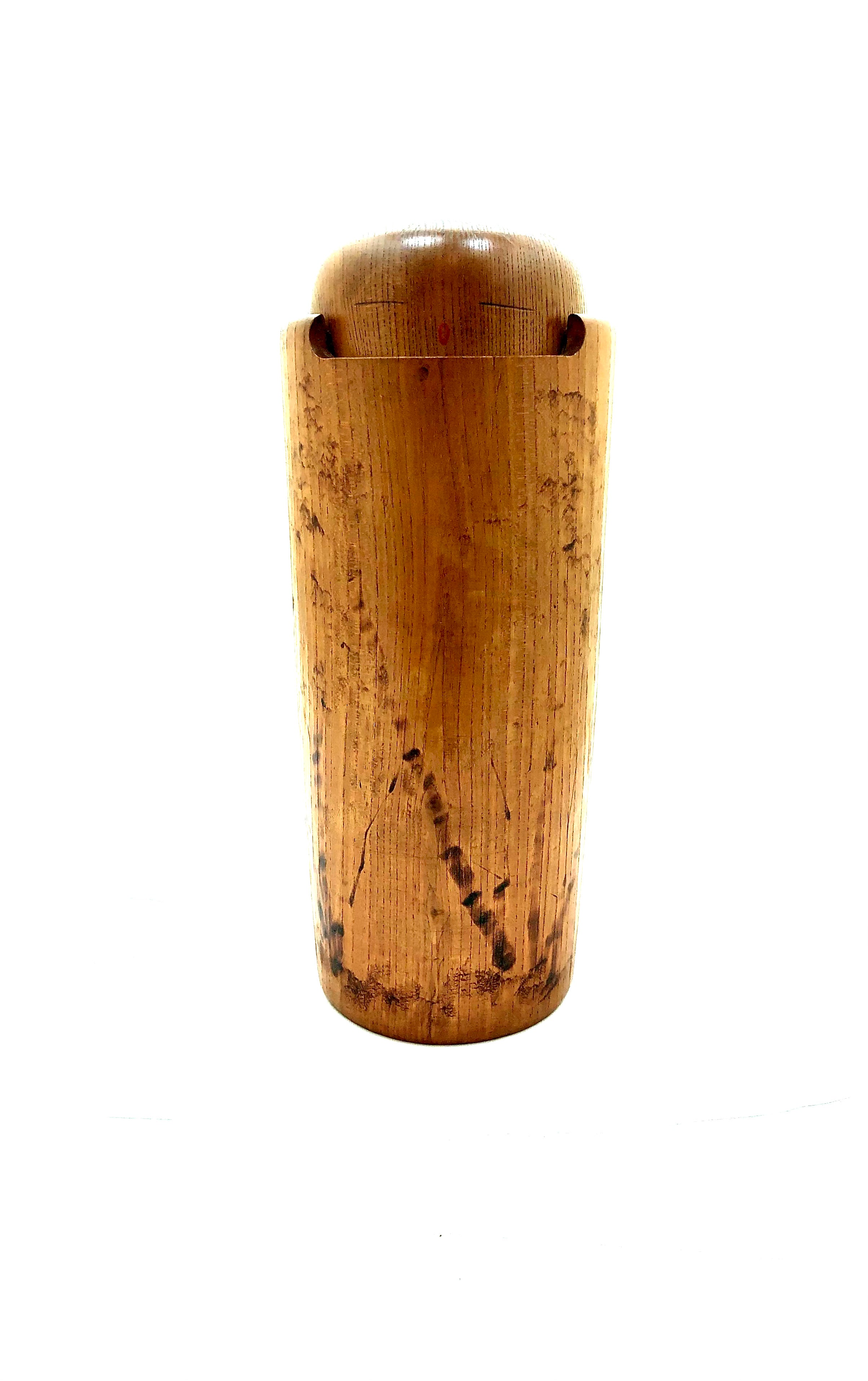




Vintage Sosaku Kokeshi entitled: Komorebi by Miyajima Muhitsu
Dimensions: 11-0”h
Simple form and function are the themes of Miyajima-san’s creations. This doll features abstract tree branches and is executed using woodburning techniques which forms the artistic basis for the motif on the body of this Kokeshi. This technique is meant to capture the essence of the Enju forest in which each stroke of the wood-burning pen has meaning, and is to evoke emotion and beauty that a viewer can see not only in each abstract rendition but also in the spaces in between which is the title of this doll, “Komorebi”, (light through the trees). This Kokeshi is made of heavy, dark-colored Enju wood, (Pagoda tree), affording the doll a rich color and interesting grain.
Condition: Excellent, original condition, with no fading or loss of color and consistent with age and standards of collectible Folk Art.
NOTE: Miyajima-san, (1929-) was born in Yonezawa City of Yamagata Prefecture, Japan, home of many Traditional Kokeshi makers. He began his career under the tutelage of Master Yamagata craftsman Kobayashi, Kichitaro, in the mid-to-late 40s, and then switched to Sosaku doll making in the 1950s. His dolls have had a great influence on Creative, (Sosaku), doll makers since then. A multiple award winner, Miyajima-san won the prestigious Prime Minister’s Award in 1973.

Artisan
Woodworker: Miyajima, Muhitsu
1929-
Biographical History:
Muhitsu began making Kokeshi in 1942, under the apprenticeship of Kichitaro Kobayashi, a maker of traditional-style Kokeshi, and devoted himself exclusively to making Sosaku Kokeshi in 1949. Since 1965, Muhitsu has produced many award-winning dolls. Miyajima-san. His dolls have had a great influence on creative, (Sosaku) doll makers since then. A multiple award winner, Miyajima-san won the prestigious Prime Minister’s Award in 1973. No further information has been published on this artist.
Collector's note – descriptive qualities, standard characteristics & ornamentation styles:
Simple form and function is the theme to Miyajima-san’s creations. The wood is most critical in his interpretation of the seasons and often incorporates the snow coat called ‘Mino”, which adds depth and character to his pieces. The wearing of the traditional Fuyu Kasa, (hat), of the 1950s is seen on many of his works and was a kind of headcovering for Buddhists, which was overly large, in a bowl or mushroom shape, and was originally made from woven rice straw. Seasonal flowers, (Camellia), are often used along with Plum blossoms and tree branches, (see the two dolls at the top right named "Bairin or Plum Grove"). He typically incorporates sumi-e’ brush work into his representation of faces, and uneven carved grooving giving ornamentation and texture to the figure. Miyajima-san works in a variety of beautiful woods, but seems to prefer the heavy, dark colored Enju wood, (Pagoda tree), for it’s rich colors and interesting grain.
Explore & Learn More about Woodworker: Miyajima, Muhitsu